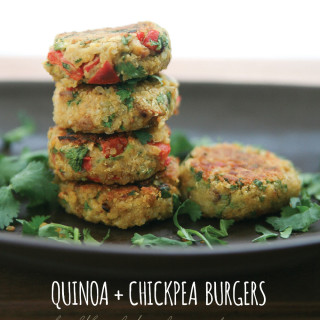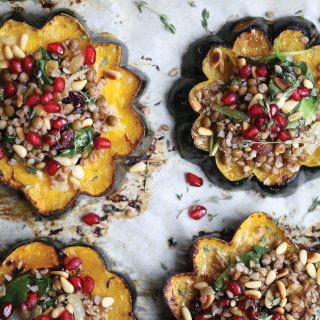One of the reasons I’m here (on this blog) ~ and possibly on earth ;) is to share good things. In the past 4 years, I have dived into a deep wealth of knowledge about our bodies, our health, nutrition, healing; the power of foods that can be our medicine (like Hippocrates said, oh like thousands of years ago. (460-377 BC to be more specific!):
“Let food be your medicine, and medicine be your food.” – Hippocrates
.

Now that I have spinned my health around and enjoy life again and can walk and talk and eat – which were all the things I could not do 3 years ago. I’m on a bit of mission to share more good things about food – just plain old Food – that chosen and eaten correctly can bring your life and health around too. And you don’t need to wait around to feel sick to feel better. A healthier lifestyle can bring you more energy, give you a youthful spark and make you happier!
I found this ‘Healthy Eating Plate’ from Harvard very impressive – they focus on Veggies, Whole grains, Oils and Water take the front stage, Healthy Protein consist of fish, beans and nuts and poultry. They put in print to AVOID Bacon and cold cuts! (I’m sure that tofu is there but in the ‘bean’ form ;) Have you noticed what’s missing from the chart? DAIRY!
I found these articles from Harvard about the consumption of Dairy very interesting:
A new study out of Harvard University showing that pasteurized milk product from factory farms is linked to causing hormone-dependent cancers. It turns out that the concentrated animal feeding operations (CAFO) model of raising cows on factory farms churns out milk with dangerously high levels of estrone sulfate, an estrogen compound linked to testicular, prostate, and breast cancers.
Dr. Ganmaa Davaasambuu, Ph.D., and her colleagues specifically identified “milk from modern dairy farms” as the culprit, referring to large-scale confinement operations where cows are milked 300 days of the year, including while they are pregnant. Compared to raw milk from her native Mongolia, which is extracted only during the first six months after cows have already given birth, pasteurized factory milk was found to contain up to 33 times more estrone sulfate.
“The milk we drink today is quite unlike the milk our ancestors were drinking” without apparent harm for 2,000 years, she said. “The milk we drink today may not be nature’s perfect food.”
One study compared diet and cancer rates in 42 counties. It showed that milk and cheese consumption are strongly correlated to the incidence of testicular cancer among men ages 20 to 39. Rates were highest in places like Switzerland and Denmark, where cheese is a national food, and lowest in Algeria and other countries where dairy is not so widely consumed.
Cancer rates linked to dairy can change quickly, said Ganmaa. In the past 50 years in Japan, she said, rising rates of dairy consumption are linked with rising death rates from prostate cancer – from near zero per 100,000 five decades ago to 7 per 100,000 today.
Butter, meat, eggs, milk, and cheese are implicated in higher rates of hormone-dependent cancers in general, she said. Breast cancer has been linked particularly to consumption of milk and cheese.
In another study, rats fed milk show a higher incidence of cancer and develop a higher number of tumors than those who drank water, said Ganmaa.
Learn more:
Harvard study: Pasteurized milk from industrial dairies linked to cancer
Harvard study: Hormones in milk can be dangerous
Harvard study: Calcium and milk, what’s best for your Bones and Health
So where can you find good sources of calcium?
| Table 1: Calcium Content of Selected Vegan Foods | ||
| Food | Amount | Calcium (mg) |
| Blackstrap molasses | 2 Tbsp | 400 |
| Collard greens, cooked | 1 cup | 357 |
| Tofu, processed with calcium sulfate* |
4 ounces | 200-330 |
| Calcium-fortified orange juice | 8 ounces | 300 |
| Soy or ricemilk, commercial, calcium-fortified, plain |
8 ounces | 200-300 |
| Commercial soy yogurt, plain | 6 ounces | 80-250 |
| Turnip greens, cooked | 1 cup | 249 |
| Tofu, processed with nigari* | 4 ounces | 80-230 |
| Tempeh | 1 cup | 215 |
| Kale, cooked | 1 cup | 179 |
| Soybeans, cooked | 1 cup | 175 |
| Okra, cooked | 1 cup | 172 |
| Bok choy, cooked | 1 cup | 158 |
| Mustard greens, cooked | 1 cup | 152 |
| Tahini | 2 Tbsp | 128 |
| Broccoli, cooked | 1 cup | 94 |
| Almonds | 1/4 cup | 89 |
| Almond butter | 2 Tbsp | 86 |
| Soy milk, commercial, plain | 8 ounces | 80 |
*Read the label on your tofu container to see if it is processed with calcium sulfate or nigari.
Note: Oxalic acid, which is found in spinach, rhubarb, chard, and beet greens binds with the calcium in those foods and reduces its absorption. These foods should not be considered good sources of calcium. Calcium in other green vegetables, like kale, collard greens, Chinese mustard greens, and Chinese cabbage flower leaves is well absorbed1,19. Fiber appears to have little effect on calcium absorption except for the fiber in wheat bran that does have a small effect20.
Sources: Composition of Foods. USDA Nutrient Data Base for Standard Reference, Release 18, 2005 and Manufacturer’s information. (source)
……
I hope you have also found this interesting… I certainly appreciate Blackstrap Molasses so much more! ;)
Nutrition and Healthy Eating can be a little tricky as there’s a lot of confusing information out there. But, with a little knowledge we can all Live Better!
Be well! Ella.
ps. Want to party again this weekend??? See you tomorrow for another weekend affair with Nutritious & Delicious foods at the Potluck Party! Yay, I can’t wait!






I really appreciate you sharing this information – I loved reading the study about Milk; and I had no clue blackstrap molasses contained so much calcium- way cool!
Thanks – happy to be passing on the information.
I know – Molasses rocks! I would have never known ;D
love this write up! I saw that article some time back anf forgot to share it on the blog! i keep harping abt it on facebook:)
Since my parents back home are never convinced enough about dairy, i use information like this to help them reduce their consumption. They are on their way! The last time they visited, i fed them almost all vegan diet and they went back with a healthier body and glow, which people back home in india noticed! eating right is so important. now if only i can get hubbs to like molasses:)
I know it’s rough to convince people – I usually don’t even try to get into the topic unless it’s somehow relevant. (it can be frustrating as people as so convinced with the old ways of eating).
Recently though, I offered soy ice cream to my father in law the other day – he immediately made a face and said oh no, that can’t be good! Then I gently insisted that he should at least try it – and he totally Loved it and surprised even himself ;)
ps. I’m sure you can sneak some molasses into some recipe ;D xo
Such a good point about todays milk not -quite- being what it used to be. Thanks for the reminder to get my calcium today! :)
Great post! I had heard the same about milk but it’s really nice to see this graphic and references to the studies. Thanks for sharing with us!
Yes! I much prefer this plate to the usda plate!
well, there is milk, and then, there is Milk.
we are blessed to have a wonderful mother run fresh (aka raw) milk dairy in our area. as a former vegan i have been dairy weary but introduced raw milk into our families’ diet hoping it would help with some behavior issues for our oldest child; my husband and i have been positively floored by the changes real milk has made in our lives (we had previously been making almond milk). i am, quite unexpectedly, a grass fed raw milk dairy enthusiast.